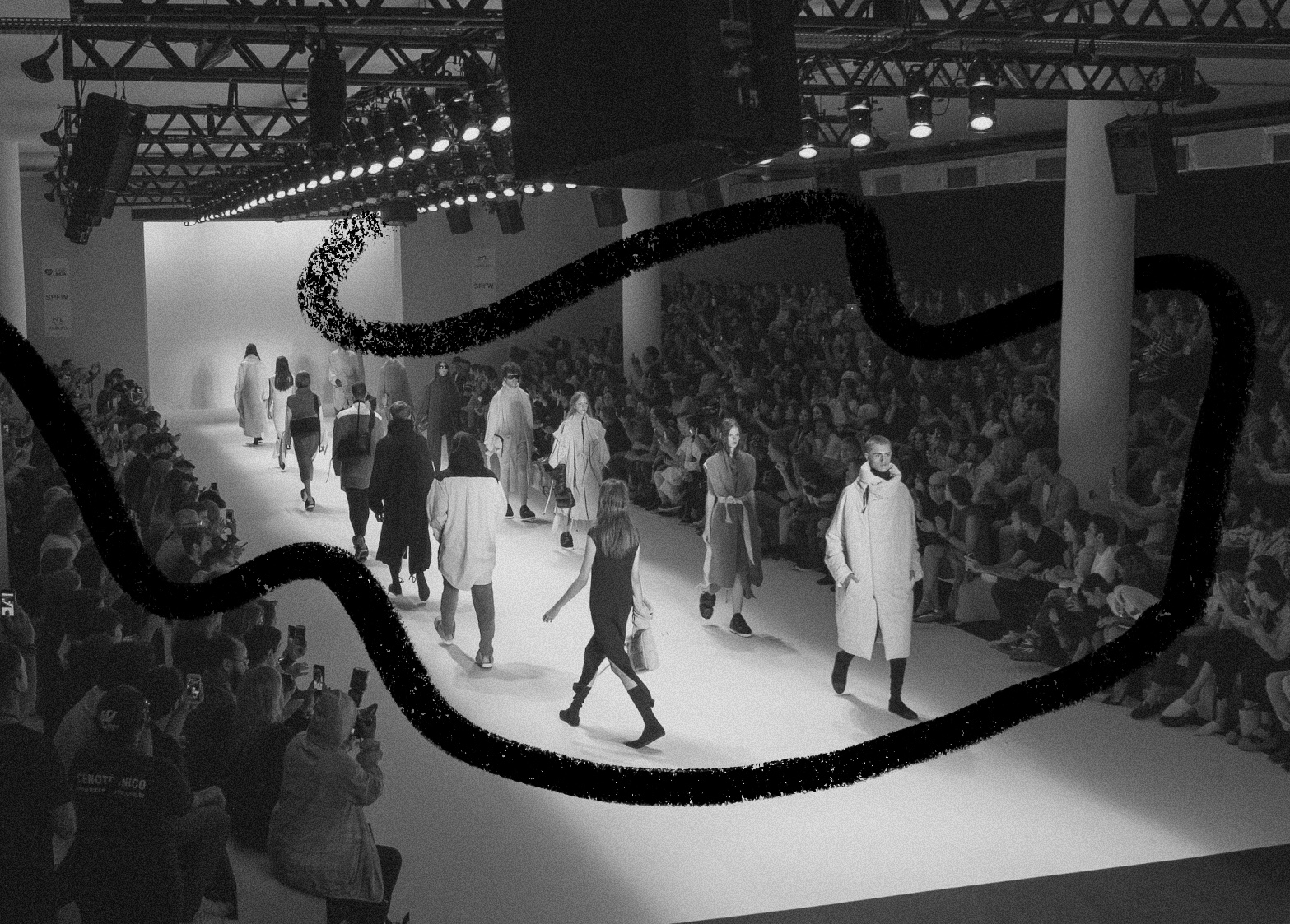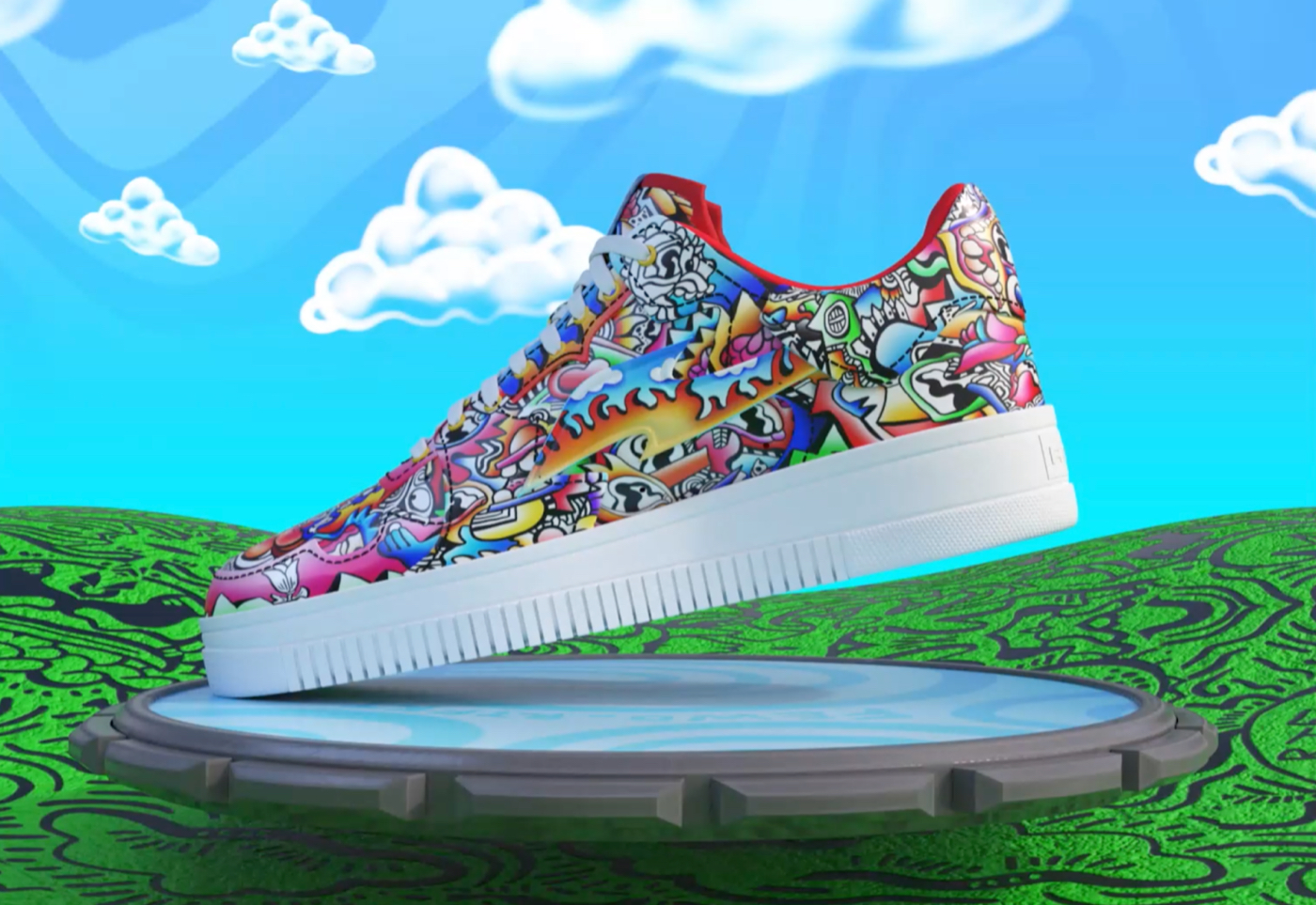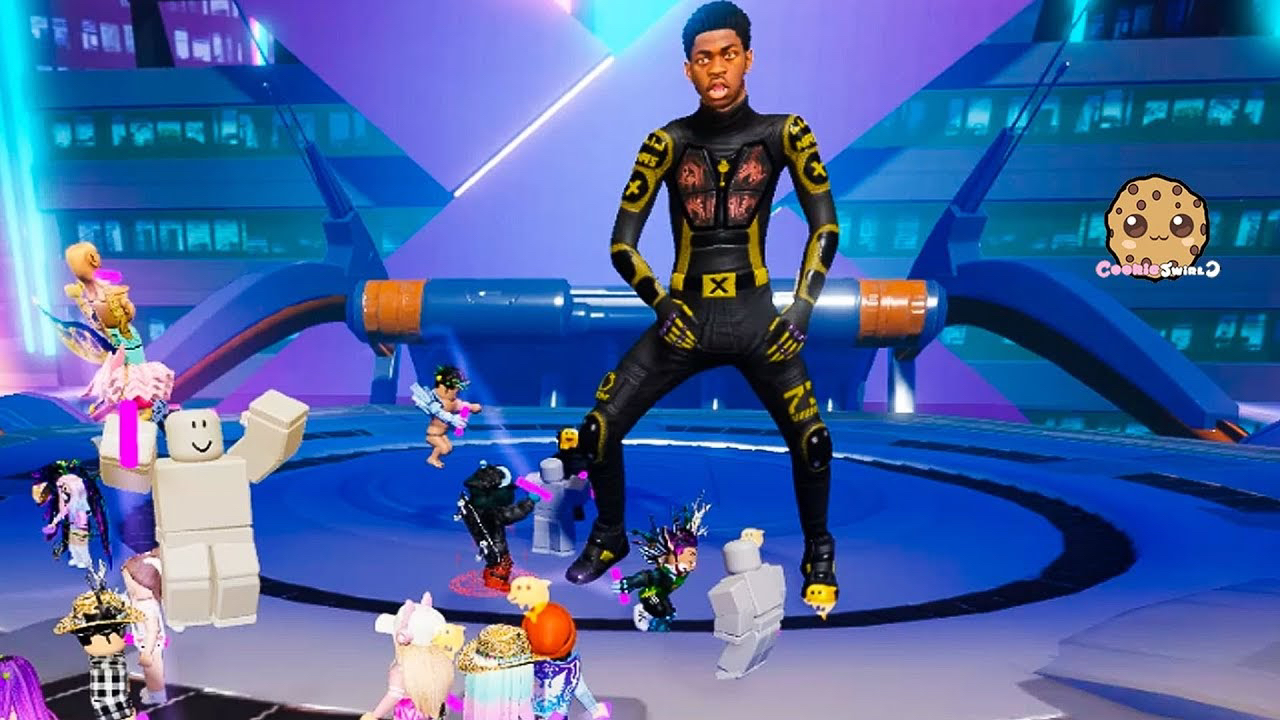
Hi, Nathan here! This week we’ve got a guest post from Leigh Cuen that asks a fascinating question: how will fashion work in digital spaces? Obviously we buy clothes for many reasons other than protection from the elements, and many of those reasons are still valid on the internet. But will people actually pay for digital fashion? What form will it take? (Wearable NFTs, anyone?) Who will we buy from? Leigh’s expert perspective on these questions is fascinating and original, so I couldn’t be more thrilled to share this essay by her with you. Enjoy!
When I pinged crypto artist Diego Rodriguez in 2020 and offered to pay roughly $70 in cryptocurrency for a new outfit for a poetry reading, I didn’t send my measurements.
Instead, I told him the design would need to look good on the avatar, designed by crypto startup Voltage Goat, that I use in the virtual gathering space VRChat. Since the pandemic began, my most stylish ensembles haven’t taken up any closet space. Instead, they’re viewed through a screen, via selfies and avatars. And they haven’t stopped fitting, unlike the custom IRL dress that mysteriously became too small after I’d spent a few months in quarantine. As long as I have access to compatible software, my avatar’s outfits will always fit just right. I got a high-quality Voltage Goat avatar because I plan to use virtual spaces for literary events for years to come, and I want readers to be able to recognize me, as me.
Several fashion designers are taking note of the ways people project and craft our identities online, from social media to video games. In March 2021, the sneaker brand RTFKT Studios garnered $3.1 million in just seven minutes by selling crypto collectibles. The Spanish fashion powerhouse Balenciaga launched a video game in December 2020 where players can explore themes and ensembles from Demna Gvasalia’s Fall/Winter 2021 collection. Also in March of this year, Burberry debuted video game “skins”—virtual outfits for playable characters. Meanwhile, Gucci has emerged as the most experimental luxury brand, launching exclusive virtual items from video games like Roblox, The Sims, and Animal Crossing, and allowing shoppers to dress their avatars in Gucci swag across platforms. Fashion schools like the University for the Creative Arts in Farnham are now offering virtual fashion design courses.
Animal Crossing swag and AR filters are valuable because thousands of people are literate in these media. They can see the quality on their laptops and while scrolling through Instagram. That’s a prime example of network economics, when the economics of a business benefit from lots of people already using it. In short, platforms that already have large networks will be the most profitable places to buy and wear digital fashion. This is probably why Louis Vuitton's menswear designer Virgil Abloh told Vogue Business he believes video games are the fashion industry’s next frontier.
Are you ready to explore why, and how, there’s so much money to be made in the nascent virtual fashion industry? Great! Let’s get started.
Determining the appeal—and the value—of virtual fashion
My VR-friendly avatar has auburn hair, big eyes, and jerky, awkward movements (kind of like me IRL). When I first reached out to the Voltage Goat designer, she asked me to provide a character sheet, which is basically a sketch of the avatar and digital garments as seen from multiple angles. So I pinged Rodriguez on Twitter. I told him I wanted pink, yet cypherpunk vibes, plus a crown. Once I got the character sheet, I sent the 3D designer that sketch along with my Instagram handle and an old portrait my friend had painted of me in high school. The Voltage Goat designer took those two-dimensional images and turned them into my avatar, a playable 3D character for virtual reality games.
My virtual outfit cost close to $400, because I had to pay both Rodriguez for the sketch and the 3D designer who turned it into an avatar. All things considered, it was just as expensive to get a custom avatar in a pink top as it was to buy a custom dress or coat directly from an upscale designer, which I’ve only been able to afford twice in my life.
As far as virtual fashion goes, my avatar experiment was a bargain. Some people are spending upwards of $10,000 on virtual shoes alone, a continuation of the multi-year shift to spending thousands of dollars on video game assets, including outfits. I still think $10,000 is a lot of money for pixels on a screen, but fashion is a form of self-expression; people are as eager to distinguish themselves in virtual spaces as they are in physical ones. We even date and get married on digital platforms these days, whether it’s via Zoom or within various gaming worlds. People are especially inclined to splurge for special occasions, like a vacation, a conference, or a wedding.
It’s hard to say how many people are buying virtual items across platforms. But on OpenSea and Rarible combined, two platforms for crypto collectibles, buyers spent more than $127 million so far in 2021. When it comes to virtual fashion, in particular, buyers aren’t always traditional luxury customers. Some designers are making millions of dollars selling cheap outfits and accessories in Roblox, a video game ecosystem where the average player is 8-16 years old. Virtual fashion thrives in globally accessible platforms with communication features, like VRChat, Roblox, and Instagram, because fashion is a shared experience—its currency is seeing and being seen.
People buy virtual fashion for the same reasons they covet and collect clothing IRL: they want their outfits, and themselves by extension, to be remembered; they want to show the world who they are. And the more time we spend as our virtual selves, the more valuable that representation becomes.
The virtual jacket my avatar wears over her pink top doesn’t keep anyone warm, but it still bears markers of high quality. The design is unique, such as the custom-made crown on the avatar’s head. It doesn’t exist anywhere else. The gloves and crown match the vibe of the avatar’s jacket, distinguished by a spiky texture across the shoulders. Plus, the avatar’s clothes fit more realistically than the default, free options in VR games—if you’ve ever paid more for a jacket fitted to your specifications rather than buying off the rack, you know the difference custom makes.
And when it comes to fashion, what isn’t possible without the physical constraints of weather and actual bodies? There appear to be only so many ways to replicate tangible makeup on my virtual face, but there are endless possibilities when it comes to fashion and beautification via avatars and digital-native characters. For example, my stylish VR avatar from Voltage Goat cost less than a traditional cosplay costume from Etsy. Such costumes are often uncomfortable and impractical for anything but walking around indoors anyway! It’s far easier to show off avante-garde designs on a screen, via a digital collectible, than it would be to move around in the real thing.
In short, virtual designs give us even more chances to experiment with fashion as an artful form of expression.
Runway, Meet the Blockchain
Say you bought a nice digital avatar from a fashionable brand. What's to stop someone from creating a near-identical digital copy?
In the real world, counterfeit fashion is nearly impossible to stamp out. In places with robust luxury fashion economies like London and Dubai, which are popular destination shopping locations, authorities seize and identify billions of dollars worth of counterfeit goods every year. Counterfeit fashion (the world of “knockoffs”) proliferates, even though physical manufacturing and distribution offer some constraints as to the scale of counterfeit schemes.
In the digital world, these manufacturing constraints don't exist. Anyone can take a screenshot of a digital outfit. In order to protect scarcity, virtual-fashion makers will need to establish value through two measures: the sophistication or flavor of design and the parent company’s ability to defend its monopoly on its style.
Virtual fashion designers will need to defend their brands, just like real luxury fashion producers do. Some shoppers bet no one will notice the difference in quality if they buy the less expensive counterfeit handbag. Others are being defrauded; they think they are buying a prestigious association, via the luxury brand, but they can’t notice the difference in quality. Few people are so familiar with luxury fashion that they recognize the quality of the fabric or pattern of stitching, or even a slightly off logo. Instead, they identify the product by price, context, and general aesthetics.
What defines the quality of the product often has less to do with its sophistication and more to do with its context. Value is also, to a lesser degree, determined by how many people are literate in this medium. Most buyers wouldn’t be able to identify the luxury good in a discount store if it lacked a logo or trademark aesthetics.
When it comes to digital goods, the seller’s online reputation, and ability to authenticate that identity, impacts the value of merchandise. For example, sometimes scammers impersonate artists and designers in order to sell virtual goods, like crypto collectibles, using someone else’s name. There’s a reason Lindsay Lohan has a verified profile on the crypto art platform Rarible. If Vogue’s assessment is correct, that “influencers are the retailers of 2020,” then anyone who cares about the authenticity of virtual Lohan swag will cross-reference her verified Twitter account and the cryptocurrency addresses affiliated with this Rarible account, too.
Someone who doesn’t care about the authenticity—just buying a virtual good for the lolz— probably won’t bother looking for blockchain data that offers a public certificate of authenticity. This good is more valuable to people who are literate in the blockchain medium, as opposed to those who can identify high-quality fabric. Plus, if someone wants to take out a loan based on a non-fungible token (NFT) from a luxury brand or fashion designer, the borrower will need to be literate in blockchain data in order to appraise the merchandise.
We can expect many more influencer-retailers in the years to come. Influencers can turn a healthy profit by “manufacturing” digital goods at scale with far less startup capital than they would need for fashion factories and shipping. However, there’s still the prohibitive costs of defending a brand. The influencer’s legal team must sufficiently (albeit not completely) defend against counterfeit fashion products and impersonators in the Wild West of the internet. Balancing marketing and legal costs will be the key to making money in the virtual fashion industry.
Industry winners will lean into social experiences
So far, the companies with thriving virtual economies during the pandemic, like the videogame ecosystem Roblox, are fueling their growth with synergies that activate passionate fandoms.
For example, virtual concerts and other events where fans can show off their in-game swag. Roblox made it easy for independent artists and luxury brands to participate in the same marketplace. A Roblox spokesperson said in an email that 850,000 people participated in the live stream for one such concert, the 8th Annual Bloxy Award Ceremony. Both brands and individual players can sell digital clothes and hair accessories in Roblox. This stands in stark contrast to IRL spaces, like Macy’s, that sell tangible products. The balance of user-generated content with corporate production will differentiate several of the e-commerce winners in the virtual fashion space.
Lil Nas X’s Roblox Concert
In addition to public spaces, people also use fashion to communicate during intimate events. We spend a lot of money on fashion to mark pivotal moments in our lives, like weddings, graduations, and birthdays. So there’s money to be made in offering special occasion wear for virtual spaces.
In the physical world, a wedding dress or tux is usually the most expensive fashion product a person will ever wear. A survey of 27,000 couples by The Knot found the average American spends $1,600 on her bridal gown. In the digital world, virtual gatherings might complement, rather than replace, IRL events. (For this reason, and because virtual fashion doesn’t reduce demand for everyday IRL garments, I don’t think the rise of virtual fashion will have any (immediate) impact on IRL fashion industry labor or fashion’s impact on the environment.) And people are likely still to spend more money on an IRL wedding dress than the avatar version, even if the profit margins for a repurposable virtual gown with a sparkly filter may be much higher than a tangible gown covered in hand-sewn beads, designed for a single use.
Keep in mind, wedding photos aren’t merely about being seen in a special outfit, the public aspect of the ensemble. The wedding dress’s value also comes from how bridesmaids and mothers gather to shop with the bride, and dress her on the big day. It derives from the social events it was created for. Companies that hone in on fashion’s social value—the way L’Oréal is by helping users shop together in online groups, and the way Tatcha offers virtual spa days in Animal Crossing—will win the e-commerce game. In addition to influencer-retailers, virtual fashion’s industry winners might include communications platforms and social media giants.
Conclusion
Every part of the demand for virtual fashion, from shopping to wearing it and showing off that special product, is driven by a social activity.
As consumers increasingly prioritize fair wages for garment workers and ethical supply chains, more shoppers prefer to shop selectively and rent garments rather than stuff their closets. Buying virtual fashion complements that more minimalist approach to luxury. If you want to understand what defines quality in a virtual world, without the soft texture of silk or the craftsmanship of handmade lace, look no further than the network economics we’ve outlined above. In five years, we can expect many fashion companies will have cross-platform strategies, from retail stores to video games. Likewise, social projects like Instagram, Zoom, and The Sims will have more power in the fashion economy.
Which other companies do you think will thrive in the virtual fashion economy? Are there any players I missed? Do you have counterexamples? I’d love to hear from you in the comments.
The Only Subscription
You Need to
Stay at the
Edge of AI
The essential toolkit for those shaping the future
"This might be the best value you
can get from an AI subscription."
- Jay S.
Join 100,000+ leaders, builders, and innovators

Email address
Already have an account? Sign in
What is included in a subscription?
Daily insights from AI pioneers + early access to powerful AI tools










Comments
Don't have an account? Sign up!